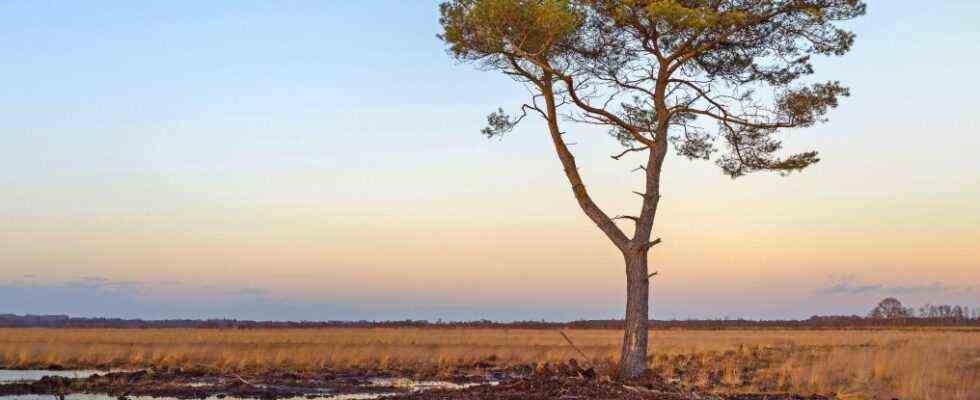If you sink into the world of the moors, you come across so many wonderful words that you could fill an entire lexicon. Oligotroph-sour, mesotroph-subneutral, mesotroph-calcareous and particularly beautiful: “rewetting”. This bureaucratic poetic word has seldom made it out of the specialist libraries of geographers. It seems now is the time.
On Wednesday the Federal Environment Ministry a national strategy presented to better protect the moors in Germany. Which also means to revive them first, because what is dead is difficult to protect. When you look at the map, you quickly realize that there used to be more bog.
The humid areas have not been as untouched as in the fairy tale for a long time, today most of the moors are built up, were used to extract peat or are used by farmers, more than 90 percent of the areas are therefore considered dead. The example of the moors shows one thing Mechanism that will stay with us for a long time: What people have created with great effort, they have to undo because the consequences are too serious. First he drained the wet moors. Now he has to “rewet” them.
In the sagas, moors are the places you never return from, but in reality they are extremely useful as long as you let them do their job. Like sponges, they absorb water when it rains, they protect against flooding and they also store huge amounts of carbon dioxide, more than any other ecosystem on earth. Those who help the moors help the climate. If, on the other hand, peatland decomposes because it has been drained, the greenhouse gases are released again and enter the atmosphere. In 2019, for example, this process accounted for 6.7 percent of emissions in Germany. Not just a little.
The Federal Environment Ministry has now announced that in addition to other funding programs to protect the moors, 100 million euros are planned in the federal budget, which sounds like a success, but it is not. Actually, the Union and the SPD had stipulated in the coalition agreement to adopt a strategy to protect the moors, but the matter went back and forth, back and forth between the Federal Environment Ministry and the Federal Ministry of Agriculture. There was no agreement, now the BMU has just presented its paper on the protection of the moors on its own – as a working basis for the next government coalition.
The State Secretary for the Environment, Jochen Flasbarth, himself admitted on Wednesday that it had not been possible to bring the strategy into the cabinet and thus make it a binding concept for the federal government. The example of the moors therefore unfortunately shows a second well-known mechanism: That even the things that politicians had already set themselves on, that were actually promised, do not necessarily become reality.
If one were to help the moors, not only would the large climate benefit, but also a small animal that can be found in the lexicon under M: the moorshuck. The sheep prefer to graze in damp areas, in raised bogs, and therefore do not like to see them dry out.
At the moment you can find the Moor Schnucke not only in the lexicon – but also on the list of endangered species.
(This text is from the weekly Newsletter Environmental Friday you here free of charge can order.)

